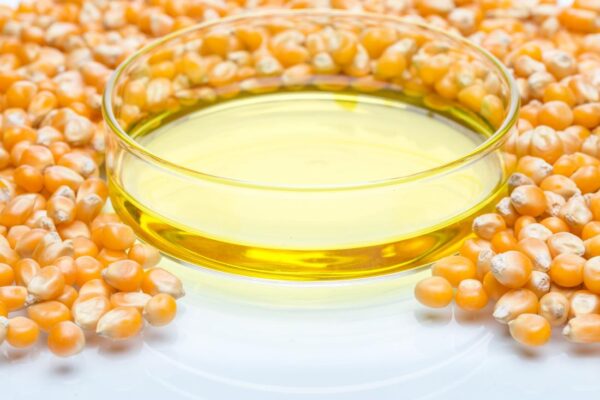Introduction
In the vast landscape of popular culture, certain images and references tend to linger in our minds long after the credits have rolled. For many, Johnny Depp’s portrayal in ‘Secret Window’ conjures memories of suspense, intertwined with the rustic charm of cornfields swaying in the wind. However, amidst the allure of cinematic narratives, it’s high fructose corn syrup (HFCS) that claims a starring role in the everyday choices we make about what we consume. Like Depp’s character navigating through the intricacies of a mystery, HFCS has seamlessly integrated itself into the modern food production process, finding its way into an array of products ranging from soft drinks to baked goods.
The Rise of High Fructose Corn Syrup
The origins of HFCS trace back to the mid-20th century, when technological advancements revolutionized the way sweeteners were derived from corn. Initially developed as an alternative to traditional sugar, HFCS gradually gained traction in the food industry due to its lower cost and enhanced versatility. This shift marked a pivotal moment in food production, as manufacturers began to favor HFCS for its ability to provide sweetness while also serving as a preservative.
Substitution in the Sweetening Game
In the complex landscape of food manufacturing, where taste, texture, and shelf life are paramount, HFCS emerged as a reliable substitute for sugar. Its molecular structure allows for greater stability in a variety of products, from carbonated beverages to packaged snacks. By incorporating HFCS into their formulations, food companies could achieve the desired level of sweetness without compromising on taste or quality.
The Sweet Side of High Fructose Corn Syrup
One of the primary advantages of High Fructose Corn Syrup lies in its cost-effectiveness. Unlike traditional sugar, which is subject to fluctuating market prices and import tariffs, HFCS offers a more predictable and economical solution for food manufacturers. Additionally, HFCS exhibits functional properties that contribute to the overall texture and consistency of food products, enhancing their appeal to consumers.
The Bitter Aftertaste: Health Concerns
Despite its widespread use, High Fructose Corn Syrup has come under scrutiny for its potential health implications. Research has suggested a correlation between excessive High Fructose Corn Syrup consumption and various metabolic disorders, including obesity, diabetes, and cardiovascular disease. These concerns stem from the unique metabolic pathways associated with fructose, a component of HFCS, which can contribute to insulin resistance and lipid dysregulation when consumed in excess.
The Science Behind the Sweetness
To understand the physiological effects of High Fructose Corn Syrup consumption, it’s essential to delve into the intricate workings of our metabolic systems. Unlike glucose, which is readily absorbed and utilized by the body’s cells, fructose undergoes a distinct metabolic process primarily in the liver. Excessive intake of fructose can overwhelm these metabolic pathways, leading to the accumulation of fat and the development of insulin resistance over time.
Navigating the Maze of Industrialization
Broader trends in agricultural policy and industrialization actively contribute to the prevalence of HFCS in our food supply.
Government subsidies supporting corn production have incentivized the widespread cultivation of corn, making it a readily available and cost-effective resource for food manufacturers. As a result, HFCS has become a staple ingredient in many processed foods, contributing to the overall abundance of added sugars in our diets.
The Marketing Maze: Transparency and Awareness
Despite mounting concerns about HFCS’s health implications, its presence in packaged foods is often obscured by marketing tactics that emphasize taste and convenience over nutritional content. Consumers may be unaware of the HFCS content in their favorite snacks and beverages, leading to unintentional overconsumption of added sugars. Addressing this lack of transparency requires a concerted effort from both food manufacturers and regulatory agencies to provide clear labeling and educational resources for consumers.
The Call for Change
In response to growing public awareness of HFCS’s health risks, there has been a push for reformulations of products to reduce or eliminate its use. Food companies are exploring alternative sweeteners and natural flavorings to meet consumer demand for healthier options. Additionally, policymakers are considering regulatory measures aimed at limiting the availability of HFCS in processed foods and promoting greater transparency in labeling practices.
Conclusion
In the ongoing saga of high fructose corn syrup, the lines between convenience and consequence are blurred. While HFCS offers undeniable benefits in terms of affordability and functionality, its widespread use raises legitimate concerns about public health and dietary habits. As we navigate this complex landscape, it’s essential to approach the issue with a critical eye and a commitment to informed decision-making. By advocating for greater transparency, supporting initiatives for healthier food choices, and fostering a culture of consumer awareness, we can work towards a sweeter future that prioritizes both taste and well-being.
